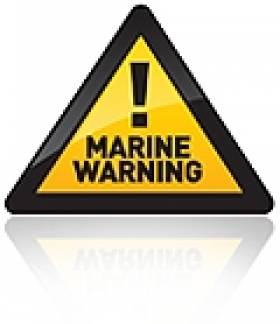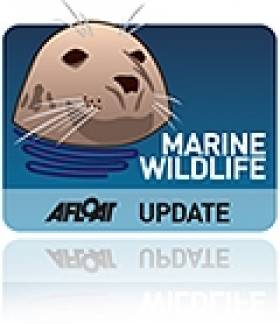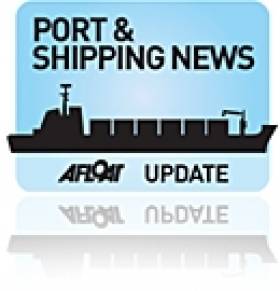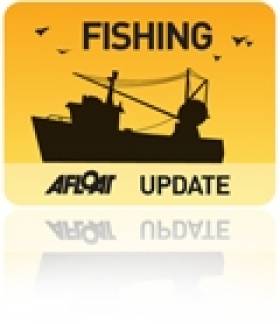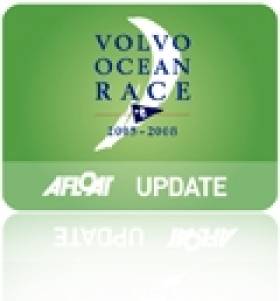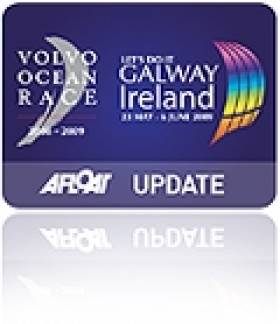Displaying items by tag: Galway
Coastal Areas Braced for Flood Risk Tonight
A combination of high tides, high winds and low pressure increase the possibility of coastal flooding, particularly at high tide around midnight on Sunday 7 November and midday on Monday 8 November.
A deep low pressure centre is expected to move down across Ireland tonight, clearing away slowly during Monday. This weather system has the potential to bring some severe weather to Ireland. Rainfall totals are likely to reach 25mm - 30mm in places during Sunday and Monday. While not excessive, this rain may lead to some localised flooding on roads. The strongest winds associated with this weather system are likely to be well to the west of Ireland; however if the track of the low pressure is further east than currently expected, then these very strong winds may possibly affect our west coast.
The principal dangers from this weather system will be due to very high seas off the southwest and west coast (waves approaching 9m) and coastal flooding due to a combination of high tides, very low pressure, storm surge and onshore winds. The danger period extends through Sunday night and, for the east coast, much of Monday also. Valid from: 12hrs Sunday Nov 7th To: 06hrs Tuesday Nov 9th.
Householders, property owners, motorists and pedestrians are warned that there is a risk of coastal flooding in Dublin in the next 36 hours according to a Dublin city council update issued last night.
More from Cork City Council HERE
More from Dublin City Council HERE
SB3 Open Day Attracted Over 30 Sailors
Of the 31 people who came along six from Howth and Burke anticipates further Howth moves into the class. The Galway connection was also renewed and two top Northern Irish helmsmen travelled to the National YC.
Two Men Die in Inishbofin Boating Accident
Two men died in a boating accident off the coast of Inishbofin in Co. Galway early this morning.
The pair, aged in their late 50's and early 60's had arrived on the island yesterday on a 40ft motor cruiser and it is understood, through local lifeboat sources, the accident appears to have happened as the two men returned to the cruiser by dinghy on Saturday night.
Both men were wearing lifejackets.
One of the bodies was washed ashore, while another was located inside the upturned dinghy around 11 o'clock this morning.
The bodies were airlifted by the Sligo-based Coastguard helicopter to Galway University Hospital.
Post-mortem examinations will be carried out to determine the exact cause of death.
Monty Halls Gives Talk on 'Capturing Giants'
Renowned diver Monty Halls is set to present a public talk on his marine animal work filming whales, sharks and dolphins around the world tomorrow night (7 October).
Halls, who has been in Ireland since April making his latest documentary series for the BBC, has been assisting the Irish Whale and Dolphin group (IWDG) with its research on whales, dolphins and basking sharks in Irish waters.
The diver, filmmaker and former Royal Marine, who is also a popular motivational speaker and performance coach, will talk on his experiences filming and diving with marine mammals around the world, and will surely provide some great entertainment.
The talk, part of the Tales of the Whales Lecture Series organised by the IWDG and the Galway-Mayo Institute of Technology (GMIT), begins at 8pm on Thursday 7 October in Lecture Room 1000 at GMIT, Dublin Road, Galway. The event is free and all are welcome to attend.
Government Begins Review of Irish Ports
Minister for Transport Noel Dempsey T.D. today announced the launch of a national ports policy review with the publication of a consultation document.
There are ten State commercial port companies established and operating pursuant to the terms of the Harbours Acts 1996 - 2009; Cork, Drogheda, Dublin, Dundalk, Dún Laoghaire, Galway, New Ross, Shannon Foynes, Waterford and Wicklow.
It is estimated that approximately 99% by volume of all goods traded into and out of Ireland are handled at our ports. Dublin Port is the State's biggest port handling approximately 44% of all tonnage in 2009. Cork and Shannon Foynes were the second and third biggest ports respectively in 2009.
Today's consultation document provides stakeholders with an opportunity to help shape future ports policy.
Speaking today Minister Dempsey said; "In 2005 our national Ports Policy Statement outlined national ports policy in a single document for the first time. Since then the commercial, technological, and regulatory environment in which Irish ports operate has changed dramatically, both domestically and globally. It is now time to carry out a review of this policy framework to ensure that our ports are properly positioned for the future.
Since 2005 our ports have experienced both record highs and more recently sharp declines in tonnage throughput. The ports face considerable challenges and it is important that national policy helps address these. The indications are that the country's return to economic growth will be export led. In this regard, it is vital that the ports are in a position to facilitate this and to make their contribution to improving national competitiveness.
I would encourage all interested parties to engage fully in this important consultation process."
The consultation document provides an overview of developments in the sector since 2005 and poses a number of questions on the continued validity and future direction of national ports policy.
Important issues addressed in the document include planning and funding future port developments, the role ports have to play in delivering the "Smarter Travel" agenda, competition within the sector and the corporate governance regime for port companies.
The public consultation period is scheduled to continue until Friday 29th October 2010.
The full Consultation Document is available for download below
To make a submission click HERE
Read Tom MacSweeney's Island Nation blog on the importance of ports HERE
SB3 Collision Prompts Rule Discussion
A collision at the SB3 western championships in Galway two weeks ago has prompted a leading Irish sailor to question the international sailing rules because in certain circumstances he says the rules appear to protect boats without right of way e.g. boats on port tack.
"There is a real problem with the rules which effectively protect the port tack approach to a windward mark inside the zone unless the offended Starboard tack boat is prepared to jump through endless complicated hoops to ensure a successful protest and in the meantime his boat could be badly damaged" says top helmsman Roger Bannon.
The damage sustained in Galway is expected to cost over Euro 5,000 to repair.
Discussion on the matter has taken place on the afloat.ie forum HERE and also on the class forum HERE.
Former Obama Adviser sees a "Rebirth" in the Use of Industry Information to Guide Scientists
Dr. Peter Heffernan (Marine Institute) with Martin Pastoors (IMARES, The Netherlands) and Dr. Steve Murawski (NOAA, USA) at the Conference. (Photo: Marine Institute).
The Conference - "Fisheries Independent Information, Galway 2010" – not only explores how information gathered at sea by fishermen can better contribute to fish stock assessments, management and policy but critically, how the vast amount of experience and traditional knowledge accumulated by the fishing industry can be harnessed in sustainable management strategies.
Speaking on the first day of the event Dr. Steve Morawski, former senior advisor for the National Oceanic and Atmospheric Administration to President Obama's Ocean Policy Task Force and the current Chief Science Advisor to NOAA Fisheries, USA said that in spite of past concerns regarding the reliability of fishery-dependent data, we are in the midst of a "rebirth" in the use of information from industry to inform stock assessment and the management of catch and by-catch allowances.
"Fortunately, great advances have been made in methods for collection and analysis of fishery-dependent data and we have experienced encouraging success in working with stakeholders to collect this type of data," he said.
Some 30 countries from across the globe are represented at the conference, which features 81 oral presentations and 50 poster displays covering the entire spectrum of fishing, from small scale artisinal fisheries right up to large scale industrial operations engaged across the world's oceans and inland waters.
Opening the conference, Dr. Peter Heffernan of the Marine Institute said that, while Ireland had made significant progress in bringing scientists and fishers together through the formation of the Irish Fisheries Science Partnership, he was keen to learn how such initiatives had worked elsewhere and what we could learn from others. "Innovation is the key element to this conference," he said, "technical innovation in the development of new data collection tools and data integration, but also through innovative thinking and co-operation in how we can marry together traditional and non-traditional information."
According to the International Labour Organisation (ILO) the capture fishing industry employs some 27 million people worldwide (including full-time, part-time and occasional fishers). In Europe, the European Commission estimates that some 141,000 people are employed in the fishing sector which produces over 6.5 million tonnes of fish between the catching and aquaculture industries.
"Fishermen and scientists have an enormous amount that they can contribute to each other," said Lorcan O'Cinneide, CEO of the Irish Fish Producers Organisation in his keynote address earlier today (Tuesday 24th August). "It is essential for the future that the integration of such information can be brought to the centre of the scientific and advice process in a manner that has the necessary rigour to be credible and useful to analysis."
Marine and inland fisheries are of particular importance to developing countries where ILO estimates that over 94% of the world's fishers live (Asia 83%, Africa 9% and South America 2.5%). In these countries fish is not only an important source of protein for many communities, but also an important part of global trade. The role that fishers and their knowledge play in ensuring a sustainable "ecosystem approach" to commercial fishing by artisinal and small-scale fishworkers the world over will be discussed during the last day of the Conference (Thursday 26th) by Sebastian Mathew of the International Collective in Support of Fishworkers (ICSF).
The conclusion of his paper will suggest that sustainability in fisheries depends upon seeking common ground between fisheries policy, scientific knowledge and fishers' knowledge and practice. He will also suggest that the key to sustainable fisheries management lies in treating fishers' knowledge with respect and by promoting active communication amongst stakeholders.
Green Dragon's Walker Signs for Abu Dhabi for 2011 Race
Appointed by the team's backer, Abu Dhabi Tourism Authority (ADTA), Walker, who steered Green Dragon from Galway two years ago, will lead an 11-strong crew hoping to stake its claim in one of the world's toughest, most extreme sporting challenges.
There is still no further news about how Ireland's entry for the race is shaping up or if work to bring the Green Dragon yacht up to speed has started.
ADTA, which was behind the emirate's successful bid to become a Volvo Ocean Race 2011-12 host city, believes Walker's appointment is a major coup for Abu Dhabi's inaugural title tilt.
"Ian is the lynchpin in the dream team we are determined to secure," explained Ahmed Hussein, Deputy Director General, ADTA. "His high profile sends a signal of the seriousness of our ambitions in a sport which will help us build international awareness of our long maritime pedigree and exceptional coastline and surrounding waters."
As design consultant on ADTA's planned, specially designed Volvo Open 70, Walker will be out to capitalise on years of experience to guide the outfit through nine-months of intense, head-to-head sailing over 39,000 nautical miles comprising four of the world's most treacherous oceans.
"The Volvo Ocean Race is mentally and physically exhausting. The whole project is quite daunting, but it is easier to comprehend having done the race before. I have huge respect for the yachts and the race and we will be as prepared as we possibly can be," said Walker, one of the world's leading helmsmen and tacticians.
"This is a fantastic opportunity to build a winning team both on and off the water. It is a huge challenge, yet we are confident we will compete for top honours. We have a unique opportunity to do something special with Abu Dhabi Ocean Racing.
"The emirate's participation is a huge step forward for sailing. Abu Dhabi is a great venue and the conditions are perfect for a sailing destination. This will certainly encourage other sailing events and championships to come to this part of the world and is already inspiring the local population to get fully behind sailing. The entire emirate, including nationals, is eager to embrace the race and get behind its team. This is going to be a fantastic journey."
ADTA and Walker, who lives in Southampton, UK, are also currently in the final stages of appointing the team's other crew members, and are committed to including a UAE national in the sporting team and another two on the shore team.
"I think it is crucial to have the right mix of youth and experience and I also like the idea of an internationally-represented crew. Obviously, you need the right mix of skills such as helming, trimming, bowmen, sailmaking, rigging and engineering, yet it is just as important to select people who will work well as a team. That is what we are aiming for with Abu Dhabi Ocean Racing," said the 40-year-old graduate of Cambridge University – one of the UK's 'Ivy League' institutions.
Knut Frostad, CEO of the Volvo Ocean Race commented, "We are very pleased to have Ian Walker back in our race and believe he will be an excellent skipper and leader for Abu Dhabi Ocean Racing. The host city is an excellent venue for sailing and hopefully this project will encourage and ignite passion for sailing within the region."
Walker, a father of two, was the skipper and sailing manager of the 2002 British America's Cup Team. He has accrued a wealth of sailing experience in a two-decade long career, which includes coaching the 2004 British Olympic Gold medal winning women's keelboat sailing team, winning the TP52 Global Championship, and leading the 2008-09 Volvo Ocean Race outfit, Green Dragon.
Plans are being progressed with Abu Dhabi stakeholders for the UAE capital's New Year 2012 hosting of the Volvo Ocean Race, when it sails into the sport's record books as the first Middle East stopover in the event's 37-year history.
Galway Gets New Sports Centre
John Killeen, one of the Volvo Ocean Race stopover organisers and now a freeman of Galway, has opened a new low-rent watersports centre near the new slip commissioned specifically for the stopover, the Irish Times repots this morning.
The centre will open later this year and house facilities for groups of sailors, divers and kayakers.
Plans for New Galway Watersports Centre Unveiled
Today (Saturday 12 June) Mayor of Galway, Cllr Declan McDonnell announced plans for a new watersports club in Galway which will provide facilities for all the watersports organisations in the city and region.
The new club will be based in the new Galway Harbour Enterprise Park adjacent to the new harbour slipway that was built specifically for the Volvo Ocean Race in 2009. The 25,000 sq ft premises is being provided by Cold Chon (Galway) Ltd for a nominal rent and the land is being provided free by Galway Harbour Company.
‘Galway City Council is delighted to support this new facility which will provide much needed facilities for a range of watersports in the city. It will ensure that Galway maintains its position as a centre for maritime excellence’ stated Mayor of Galway, Cllr Declan McDonnell
Clubs and organisations can use these new facilities at a nominal rent. Some of the clubs that have already committed to this new facility include the Galway Sea Scouts, Galway Sea Sports Association, Galway Sub Aqua Club, Bádoiri an Cladaigh, OYTI, Galway Coastal Rowing, and Kayak Mor.
‘The Harbour Company is pleased to assist in pulling together the various water sport bodies under one roof and in the heart of the harbour. The new facility and the recently constructed slipway will be the focal point for Galway’s marine leisure, getting Galwegians afloat and established in the city, commented Harbour Master’, Captain Brian Sheridan.
The building will also host the Let’s Do It Global (LDIG) office. LDIG ran the very successful Green Dragon campaign and the Galway Volvo Ocean Race Festival and more recently organised the Galway Powerboat Festival. The team is now working towards hosting a spectacular finish to the Volvo Ocean Race 2011-12 in July 2012.
At today’s launch John Killeen, MD, Cold Chon stated ‘Cold Chon is delighted to support another sporting facility in Galway. Over the years Cold Chon has provided support to facilities such as Pearse Stadium and Galwegians Rugby Club and the sponsorship is in line with our strategy of supporting sport in the region.’
The centre will provide operational facilities such as offices, changing rooms and storage facilities. There will be no social amenities or bars at the club however it is anticipated that the establishment of the club will provide impetus for attracting further watersport events to Galway.
Harry Hermon CEO, Irish Sailing Association commenting on the announcement stated: ‘The opening of the Galway Ocean Watersports Club will help create a centre of maritime excellence in Galway and thereby attract national and international events to Galway. It is in keeping with the national strategy for developing a municipal centre for a variety of sporting and recreational interests’.
It is planned to open the Galway Ocean Watersports Club late 2010.





























